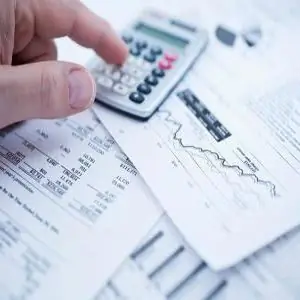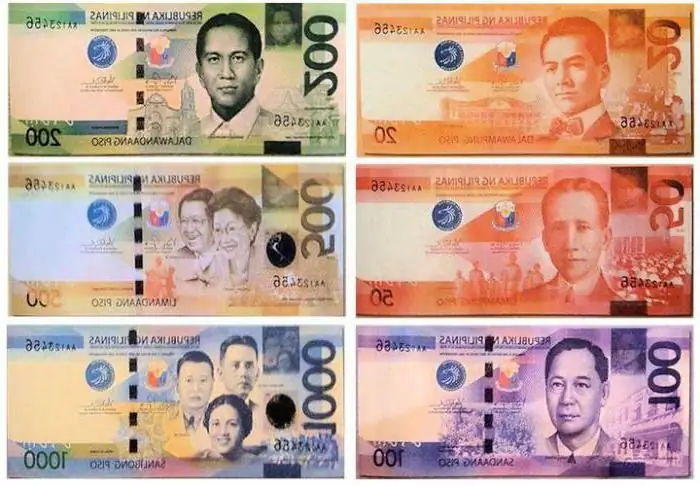2026 Author: Howard Calhoun | [email protected]. Last modified: 2025-01-24 13:10:43
One of the largest commodity exchanges is the LME, the London Metal Exchange. It has existed for more than one hundred and forty years, during which time it has been modernized several times to meet the needs of the UK economy. Read more about the history of the exchange, trading rules and interesting facts about its formation.

Tin soldier in a copper helmet
Industrial boom, a sharp increase in demand for copper and tin in the mid-19th century were the main reasons for the emergence of the LME.
Constant innovation while maintaining the traditional rules of trading transactions define the main principles of the London Metal Exchange.
Its creation in 1877 was dictated by time. The coincidence was not accidental - important events anticipated the emergence of the exchange: the growing supply of copper and tin from Chile and Malaysia to the UK, the constantly changing quotes of metals on the London Stock Exchange.
At that time - the beginning of the 19th century - in the UK there was oneRoyal Exchange. It was filled with a wide variety of merchants: from ship charterers to financial tycoons. Merchants seeking assurance of a timely supply of metals needed a new place where they could easily negotiate prices. After all, the most dangerous thing for both sides of the copper deal was the long-term import: it is not known how the price will change until the ship arrives with raw materials to a buyer from distant countries.
Official opening of the stock exchange
Interested traders from European countries began to come to the UK to conclude exchange transactions for raw metal. They chose a coffee house near Cornhill near the Royal Exchange. It was there that the tradition of the ring was born - the ring, when a person who wanted to sell drew a circle in sawdust on the floor of the establishment, indicated the price in the center and shouted: “Change!” Everyone who wanted to take part in the trade gathered around the ring and made their offers. The concepts and traditions of open outcry trading - with a voice in the ring (in a circle) - have survived to this day.
In 1876, on the initiative of metal traders in London, a metal exchange was registered, which opened on January 1, 1877 and is still operating. The exchange stopped its activities only during the Second World War until 1949.
Trade rules: five minutes and three months for everything about everything
The main invention of the exchange is the LME futures contract. A unique feature of LME contracts is that they are concluded daily for a period of three months with the metal price fixed at the time of delivery. In the early yearsthe existence of the exchange, this period was due to the time of delivery of goods from Chile to the UK.
The futures contract has shown its uniqueness in the following: traders can safely sell raw materials before the arrival of the cargo at the contract price, without losing from falling prices on the stock exchange. Futures contracts have not changed over time.

Exchange trading, like many years ago, is carried out daily, except for weekends and holidays. In multiple sets or sessions:
- first auction starts at 11:45, ends at 14:45;
- next session starts at 14:55 and ends at 17:00.
According to the results, the price is announced.
During the sessions, each metal is traded twice, with the trading time for one metal being five minutes.
The results of the auction are the official daily price for each type of product, it is announced based on the results of the second auction of the first or morning session.
In order to fix a deal, you need to determine the number of contracts, their price. All participants with the right to make deals in the ring sit in orange chairs facing each other, in a circle, and shout out their offers for 5 minutes. Transactions are concluded by voice. Then the concluded contracts go through the mandatory registration procedure in the Clearing House of the exchange - LME Clear.
In transactions with voice, the following are indicated: the volume of goods supplied, the conditions and terms of delivery, the requirements and quality standards of the purchased goods.

Types of contracts, or Six aces in the pocket
Aluminum and nickel began to trade on the LME (London Metal Exchange) in the late 1980s. The exchange becomes the largest in the field of non-ferrous metals trading.
There are new contracts based on six raw metals on the London Metal Exchange: copper, tin, zinc, lead, nickel, aluminum. These are LMEX index contracts, introduced since 2000.
Essentially, the Metals Index is designed to give investors access to non-ferrous futures (future) trades without having to physically deliver them and without the costs associated with holding and executing transactions.
There are monthly LME-minis futures, they are cash oriented for copper, aluminium, zinc. Since 2010, small futures for molybdenum, cob alt have been launched.
SteelScrap and SteelRebar cash deals became available as an addition to the contract. They allow investors to secure funds, buy part of the goods and, on the difference in price when selling it, not only save money, but also get additional profit based on metal quotes during trading on the London Stock Exchange.
Insurance of risks when concluding a deal against the impact and changes in prices in the future is the basic function of the London Metal Exchange. This operation is called hedging. has been held on the exchange since its official foundation and is one of the reasons for the creation of the exchange. Hedging allows traders to minimize future risks as much as possible.

New times - new masters
The metal market has changed over the past century, the global content of exchange contracts is changing with it, new metals, including precious ones, are introduced as needed, but the rules of trade remain unchanged.
In 2012, the LME (London Metal Exchange) was bought by the Hong Kong Stock Exchange operator Hong Kong Exchanges & Clearing Limited to form LME Clear, which aims to improve settlement and trading systems for metal traders.
Additional electronic settlements have been created for more efficient sales.

Not by bread alone, but by non-ferrous metals
In addition to the mandatory exchange transactions, the LME has become a real school of market economics, in connection with which it has opened up opportunities for:
- Development of exchange games on the price difference, which helps contract holders to increase the profitability of trading on the exchange.
- Investment in raw metals, it can be much more profitable than conventional financial transactions.
- Funding stock exchange warehouse certificate holders with the right to dispose of goods. This operation is called landing and allows you to get the necessary capital, with the calculation of the further delivery of the goods.
- Arbitrage - when different traders trade simultaneously on the exchanges of several countries.
Management and trading system
The London Non-ferrous Metals Exchange is governed by an exchange committee.
In turn, exchange members havea different status that allows or does not allow transactions on the LME. There are six status categories of participants:
- With maximum rights, including the right to trade in the ring. Today, the exchange allows nine participants to trade in the ring.
- All rights except trading in the circle.
- Eligible to make their own clearing trades, but not allowed to trade in the ring.
- Brokers providing services but not authorized to transact.
- Individuals with the right to transact as clients.
- Honorary members of the exchange who do not have the right to trade.

Strategy performance - orderly metals trading
To assess the scale of this largest non-ferrous metal exchange, it is enough to count the amount of raw materials traded.
- The amount of aluminum sold daily is more than 12 billion in dollar terms.
- Copper on the London Stock Exchange is traded daily in the amount of three billion dollars.
- One day of zinc trading can reach up to 4 billion dollars, which in physical terms is about two tons of zinc.
- Up to forty tons of nickel in sales generates a turnover of 1 billion dollars.
The London Non-ferrous Metal Exchange is the guarantor of the trading parties, having a warehouse property with goods in various countries and parts of the world.
From the summer of 2017, LME introduces trading and interaction with the precious metals exchange, contracts forgold and silver futures. To prepare the trade, negotiations were held with the International Gold Trading Committee. The fact is that, as noted by analysts, this market has begun to become obsolete: the volume and level of information provided to traders do not satisfy the needs of modern transactions. That is why the negotiations (in the context of the new LME policy) by the London Bullion Exchange in order to ensure the transparency of transactions in the precious metals market turned out to be so important.

Conclusion
The London Metal Exchange (precious and non-ferrous) is one of the most important in the world. More than two hundred lots pass through the exchange annually, physical deliveries are made under futures contracts in volumes exceeding 4 billion tons of metals. The exchange secured three-quarters of the global metal futures market.
Recommended:
The New York Stock Exchange is one of the oldest in the world. History of the New York Stock Exchange

An interesting story of the appearance of the national flag on the main pediment of the stock exchange building. Due to the onset of the Great Depression, many bankrupt stockholders committed suicide by throwing themselves out of its windows
Exchange rate differences. Accounting for exchange rate differences. Exchange differences: postings

The legislation that exists today in the Russian Federation, within the framework of Federal Law No. 402 "On Accounting" dated December 06, 2011, provides for the accounting of business transactions, liabilities and property strictly in rubles. Tax accounting, or rather its maintenance, is also carried out in the specified currency. But some receipts are not made in rubles. Foreign currency, in accordance with the law, must be converted
Organizational structure of Russian Railways. Scheme of the management structure of Russian Railways. Structure of Russian Railways and its divisions

The structure of Russian Railways, in addition to the management apparatus, includes various dependent divisions, representative offices in other countries, as well as branches and subsidiaries. The head office of the company is located at: Moscow, st. New Basmannaya d 2
Currency of the Philippines: history, exchange rate against the ruble and the dollar, exchange

The article discusses the currency of the Philippines. It contains a brief historical overview, provides data on the exchange rate, contains information on where and how you can exchange the Philippine peso for the money of other countries
Stock exchange - what is it? Functions and participants of the stock exchange

Most of the world's leading economies have established stock exchanges. What are their functions? Who participates in trading on stock exchanges?

